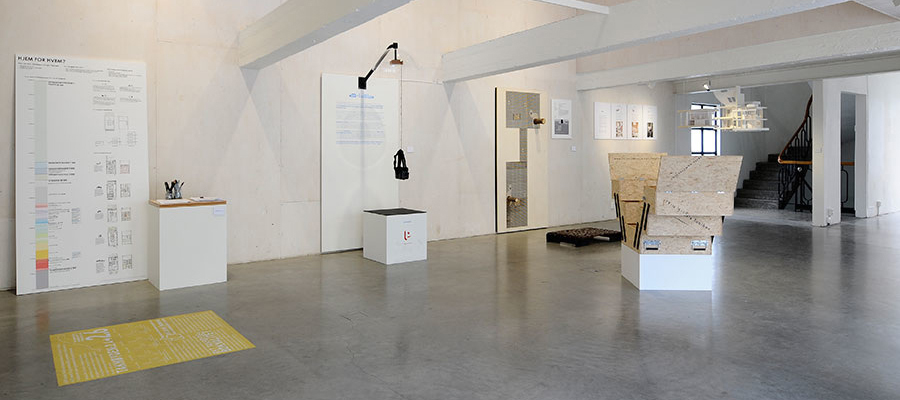
A MOVEABLE FEAST (at ROM)
Review of the exhibition SNAPSHOT - published online at www.r-o-m.no.Hemingway once wrote that “if you are lucky enough to have lived in Paris as a young man, then wherever you go for the rest of your life, it stays with you, for Paris is a moveable feast.”(1) Going through architecture school is like having lived as a young man, or woman, in Paris. Architecture is also a moveable feast that follows you wherever you go for the rest of your life.
However, most graduates who choose to practice architecture as the source of their livelihood find themselves in a world with little room for the idealistic and bohemian spirit of their youth. The state of the economy, the political regime, social tendencies and technological trends set the frame – more or less stringent and always changing – within which the practicing architect must operate. How to maneuver through this landscape of constraints? What resources to draw on so as to keep advancing? How much resistance is possible and which compromises are inevitable? What of Paris can be defended and preserved and what must be surrendered and wistfully forgotten (forever)?
When ROM asks What is architecture´s most important task today? and What is the potential of architecture in the future? it is essentially issuing a call to the invited architects to position themselves on the current topography of the profession and share the outlook – both foreground and background – from their standpoint. The diversity of the twenty-four exhibited contributions affirms the wide range of convictions and strategies in practice towards an architecture.(2)
The aim has not been to find consensus or to disclose a unique trend towards a certain direction. Rather the opposite in fact. The intention has been to trigger a polyphonic conversation between voices speaking on the same matter but with different tone, pitch and resonance. The risk of producing a cacophonous ensemble is inherent in this sort of approach to a group exhibition, but this one has managed to steer clear of that. Exhibited in the right density, contributions seem to have found their rightful place in the space of the gallery, composing together a spontaneous and vibrant constellation.
Naturally each star in this constellation emits a different sort of light, but all share the fact that their authoring agents chose to answer the call and to devote resources (in variable degrees) so as to express their particular point of view on the zeitgeist of the profession. The fact that this had to be done at one blow posed a common challenge. In a solo show the exhibitor benefits – apart from the glory – from the chance to elaborate while having the extended attention of the visitor. But here exhibitors had to be concise in vying for their stand – both physical and ideological – in the company of their colleagues.
What have the contributing parties prepared for this moveable feast at ROM? There are at least as many ways to look at and relate these entries as their number. But in any case, there is plenty of food for thought in the exhibition and many ways to partake of this, so go there and take your own pick. One thing is sure though: more questions are on the table now than at the outset of this feast, and fortunately so. For as long as there is discussion there is also freedom. Freedom to question, to explore, to express.
However, notwithstanding the need for discussion, the testing ground of architecture is the soil – here the architect comes up against a host of challenges in the effort to land architecture. The nature of these challenges varies according to the practice´s size, focus, and strategy, but they are invariably there and on the rise nevertheless. Every practitioner tries to safeguard his/her professional integrity – in whichever way each one understands this – when facing the questions posed at the beginning of this text. What of Paris remains in the end depends on the choices made along the way.
________________
(1) Hotchner, A.E., Papa Hemingway, New York: Random House, 1966, p.57 The term moveable feast – used as the title for the posthumous publication of Hemingway´s memoir from his early years in Paris – refers to holy days that are observed on a different date each year.
(2) The term "an architecture" – instead of just architecture – harkens back to the Romantic era, when the term was first used to contain the notion that cultural production is distinctive to and expressive of its historical and national roots and that architecture in particular ought to be an apt expression of the spirit of its age.
